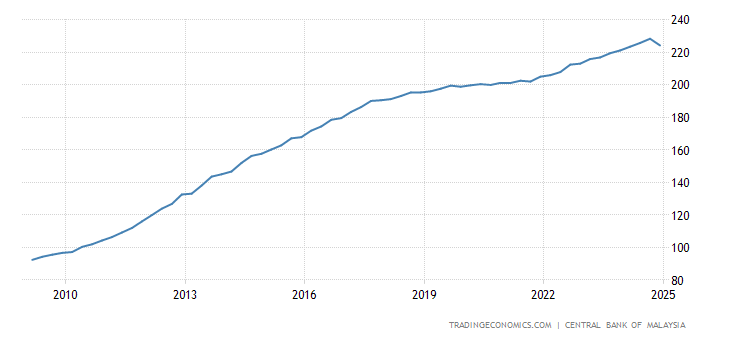What is Asset Allocation
Asset allocation is where an investor's fund is allocated into different major classes of assets.
It is a very important part of the investment management process and many studies have shown that good performance of investments was very much influenced by effective asset allocation decisions.
Types of Asset Classes
The major classes of assets are:
- Equities
- Debt Securities
- Money Market Instruments
- Properties
- Commodities
- Currencies
- Gold
Let's look briefly at each major classes' characteristics:
a) Equities
Equity investments, such as shares of companies, are securities that come with a "claim" on the earnings and/or assets of the issuing company.
Ordinary shares, as traded on most stock markets, for example, the Bursa Malaysia Securities, is the most popular equity investments.
The stock market can be volatile, with rapid changes in share prices.
Share price can swing due to
- company performance
- political issues
- social issues
- governmental issues
Types of equity investments:
- Ordinary Shares
- Preference Shares
- Convertibles
- Warrants
Due to the recent Covid-19 pandemic, the stock market all around the world has dropped more than 30% (Dow Jones) in March 2020 from is high in Jan 2020.
The volatility is very high for equities.
However, using the right strategies, one can reduce the negative impact, in fact many are able to take advantage of it as well.
Buying the shares of good fundamental companies at a discount can accelerate the returns of the portfolio.
Malaysia KLSE Performance

US S&P 500 Performance

b) Debt Securities
It is sometimes called
- Debentures
- Bonds
- Notes or Commercial paper
It depends on the maturity and certain other characteristics.
Both government and private sector businesses issue debt securities for financing purposes.
The holders of debt securities are typically entitled to the payment of principal at maturity and interest at regular intervals.
Debt securities are issued for a fixed term and redeemable at the end of the term.
Types of debt securities
- Protected by Collateral
- Unsecured
The reason people invest in debt securities
- Price Stability
- Periodic Income
Personally, I do not really invest so much in bonds.
It only consists of a very small percentage of my portfolio.
Malaysia 10 Year Bond Price

c) Money Market Instruments
This is short term debt instruments that may have characteristics of deposit accounts, such as
- certificates of deposit
- bills of exchange
Normally the return is low, but it is safe.
It is very liquid and normally this is for a short term.
It is important for investors to understand each asset class properly before investing in it.
You will be exposing yourself to high risk because you do not know what you are investing in.
d) Properties
This is one of the popular investments of Malaysians.
i) Direct investment
Investors acquired the whole or part of physical properties (residential or commercial).
This requires a higher capital and take longer time.
The price of properties are less volatile than shares.
But it is less liquid than shares.
Generally, investing in properties is perceived to be a lower risk than investing in shares.
This is why banks are willing to lend you a huge amount of money for you to buy a property.
Property investment return comes from
- Rental Income
- Capital Gain
ii) Indirect Investment
You can invest through:
- Real Estate Investment Trusts (REIT)
- E.g Sunway REIT, IGB REIT, Pavillion REIT
- Property related shares
- E.g Gamuda
Malaysia REIT Index Performance
Malaysia Property Index:

Malaysia House Price Index YoY Change

Sample of Asset Allocation Percentage
The allocation range is not static.
It depends on economic and market conditions.
If the share market is on a bull run, a higher percentage can be allocated.
Strategies of Asset Allocation
a) Strategic Asset Allocation
To create a portfolio with asset mix with optimal balance between expected risk and return for a long term investment horizon.
Typically rebalanced yearly or quarterly basis.
This is more to a buy and hold strategy.
Diversification is the keyword here.
b) Tactical Asset Allocation
More of an active approach, so that the portfolio can be positioned into various assets, sectors, or individual shares that show the most potential for gains.
Below are some of the considerations for tactical asset allocation:
- assets (equities, bonds, REITs)
- sectors (technology, properties, consumer discretionary)
- geographic (US, China, HK, Malaysia, Emerging Markets)
- individual shares (Technology: Microsoft, Facebook, Google)
This is a short term deviation from the strategic mix to take advantage of unusual or unexpected investment opportunities.
Covid-19 Example
An example is during this Covid-19 pandemic, many people are doing online meeting, or making purchases online (e-commerce).
Cloud computing, e-learning are also on the rise. Not to mention online games and
Stocks like Microsoft, Amazon, Alibaba are flying due to the recent surge of demand for their services.
So an investor can add some exposure to these companies' equities.
Technology is a good sector to get the exposure right now.
Note that however, tactical efforts may not guarantee to provide the expected returns. as it requires more expertise.
c) Core-satellite Asset Allocation
This is basically the hybrid of both strategic and tactical asset allocations.
Reference
What asset classes are you investing in?
Share to us your asset allocation portfolio percentage and tell us why.
We want to hear from you.






![[LATEST] KLSE Stock Best Dividend (UPDATED 20 MARCH 2020)](https://blogger.googleusercontent.com/img/b/R29vZ2xl/AVvXsEhIp9Zu5l7EnNju0NvAY1yq7sCgFxhkqLTWGm5c_VY6xR3lKTvKcrqp2Avp7w1lFaKtiviEMnxAftmDktmnbAck2yGX_-dI6z0vzp2-cpqKBS7ze48FxutAetF-2827pMDZtbU4RfJqfdBv/w100/TOP+27+KLSE+STOCKS.001.jpeg)
![[Covid-19 Latest Updates] KLSE Index Rebounded](https://blogger.googleusercontent.com/img/b/R29vZ2xl/AVvXsEi9SW_IBop_jhHwXL7QJBOoxDzMj9flvvsz7_OIbjPTeC6NFke0kJxhUDuxc61hiieDJJ6Gx2P0AFJwqccM6xpszFoM0wPlXnyiCJrDHhSE1vfn3aI_Agfin-p9qOwuCEyasi-wprjSqYDw/w100/Slide2.PNG)
![[LATEST] KLSE Best Dividend Stock (UPDATED 24 JANUARY 2021)](https://blogger.googleusercontent.com/img/b/R29vZ2xl/AVvXsEildh9exPtPC6TbJ5rkyBt0g8EXhogZN2XkfGpVFt4u-j0Hy_zc70JGjbYeVymxcWPZGqsneAugrZMsfd_WWwMsyyzdgY3eSdwy_AbBKGjSx0wduKVEsiXQM3Mj43XvO8l6YpmFvk9KnOfD/w100/Malaysia+Investment_KLSE+Best+Dividend+Yield+Stock_2021.png)

0 Comments
What do you think of the post?
Kindly share your input, we want to hear from you.